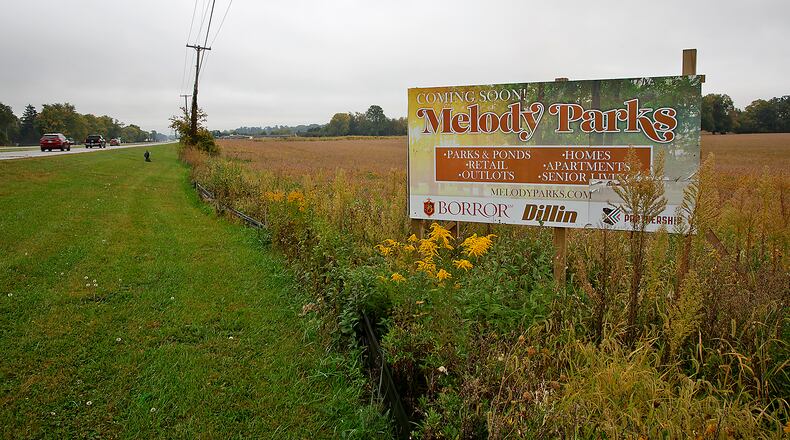The city’s action enables the developer of the project to place an assessment on properties that will help fund public infrastructure needed to support the single-family homes, multi-family apartments, retail and restaurant operations that will be included in the 400-acre Melody Parks development. At the same time, the city has approved tax abatements for the next 30 years for the project by designating Melody Parks part of the city’s Community Reinvestment Area and by offering a 15-year Tax Incremental Financing (TIF) tax abatement for single-family property owners.
Springfield Twp. Trustee Tim Foley reiterated his opposition and told commissioners the city’s approval of TIF and CRA designation for Melody Parks will reduce tax revenue for the township and the school district, and pose “an accounting nightmare” in the years to come.
“The funding for city residential development within Springfield Township and Clark Shawnee School District boundaries should not be the responsibility of the township and school district,” Foley stated. “Imposing TIF and CRA may be legal, but is it fair and ethical to Springfield Township and Clark-Shawnee School District?”
Clark-Shawnee School District Superintendent Brian Kuhn also addressed the commission, responding to assertions offered at a previous meeting by Commissioner David Estrop regarding school funding.
Kuhn pointed out that while the developer offered several proposals to the school district, none of them matched the developer’s own cost projections for the anticipated influx of students.
The school district ended up with a deal projecting $63 million in revenue for schools over the next 30 years. Kuhn stated, “It’s important to note that the developer also projects the cost to educate students living in the single-family homes will cost $71,640,000 over the same 30-year period.”
Kuhn said that the school district’s “biggest challenge with the Melody Parks development is the same challenge the developer faces. The initial infrastructure costs.”
“The developer can make use of TIF and CRA provisions to help reduce the impact that initial infrastructure costs have on the development project. As a school district, we do not have those tools available to us. The tax revenue we receive will fund the education of students but does not address our infrastructure needs, because we do not have the space for the number of students being projected.”
Kuhn concluded his remarks indicating “we as a district are supportive of and understand the benefits of development for the community. Our challenge is that development without proper resources makes difficult to properly serve the community.”
Springfield Mayor Rob Rue responded that he has learned through this process that the state of Ohio “does not set up areas for growth and development very well … they don’t help schools grow at times when they need to grow … they kind of gridlock us … It is very frustrating … I know we have competing interests, but I appreciate your comments and your leadership.”
Commissioner David Estrop said while the state offers “substantial incentives for companies to locate here, because they certainly benefit from the jobs and housing development, they have yet to tackle the issue of school construction. And that needs to be fixed at the state level. We can’t fix that here.”
About the Author
